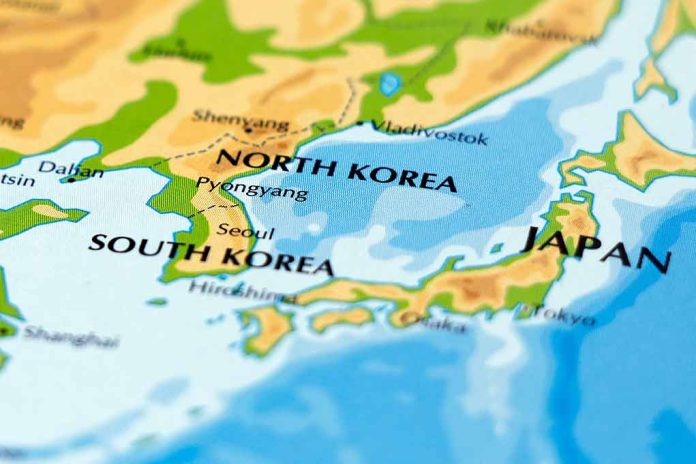
Russia considers deploying missiles in Asia as tensions escalate with US military movements in the region.
At a Glance
- Russia may deploy medium- and shorter-range missiles in Asia-Pacific in response to US actions
- US contemplates deploying missile units in Southeast Asia, particularly Japan
- Russian Deputy Foreign Minister warns against expanding missile systems in the Pacific
- Potential Russian missile deployment likely to receive support from China
- Situation follows US withdrawal from Intermediate-Range Nuclear Forces Treaty
Russia’s Potential Missile Deployment in Asia
In a significant development that could reshape the military landscape in Asia, Russia is considering the deployment of missiles in the region. This move comes in response to potential US military movements, particularly the Pentagon’s deliberations on deploying missile units in Southeast Asia, with a focus on Japan. The primary motivation behind these US considerations appears to be growing concerns over China’s military threats towards Taiwan.
Russian Deputy Foreign Minister Sergei Ryabkov has indicated that Russia could counter these US moves by positioning medium and shorter-range missile systems in the Asia-Pacific region. This potential action by Russia could significantly increase regional tensions and potentially receive backing from China, thereby amplifying global security risks.
⚡️RUSSIA MAY DEPLOY MEDIUM, SHORT-RANGE MISSILES IN ASIA IF US MISSILES APPEAR THERE
🗣️"Of course, this is one of the options that has also been repeatedly mentioned. The appearance of such US systems in any region of the world will determine our next steps, including in the… pic.twitter.com/N7XgNDkZhD
— Sputnik (@SputnikInt) November 25, 2024
US Military Movements and Russian Response
The US has already taken steps to bolster its military presence in the region. Reports suggest that a new intermediate-range missile system, Typhon, capable of firing nuclear-capable Tomahawk missiles, has been deployed to the Philippines. Additionally, discussions are underway regarding the deployment of the US Marine Corps’ High Mobility Artillery Rocket System in Southeast Asia.
In response to these developments, Ryabkov emphasized that Russia’s actions would depend on US policy. He urged against expanding missile systems in the Pacific, warning that such moves could lead to increased global missile proliferation. Ryabkov also mentioned Russia’s new Oreshnik medium-range ballistic missile, capable of reaching over Mach 10, noting that it currently faces no deployment restrictions.
“Naturally, this is one potential option we have repeatedly warned about. Our further steps, including in what concerns our military-technical response, will depend on the deployment of corresponding US systems in any region of the world,” said Ryabkov.
Implications for Regional Stability
The potential deployment of Russian missiles in Asia could significantly alter the balance of power in the region. It’s likely that such a move would receive support from China, further complicating the geopolitical landscape. This scenario unfolds in the aftermath of the US’s exit from the Intermediate-Range Nuclear Forces Treaty, which has opened the door for both nations to develop and deploy new missile systems in strategic locations.
The situation has the potential to escalate tensions not only between Russia and the US but also involving other regional powers such as China and North Korea. The deployment of such missile systems could serve as a compensatory measure for Russia to reach relevant targets, as suggested by Ryabkov, potentially triggering a new arms race in the region.
Global Implications and Future Outlook
As these developments unfold, the international community is watching closely. The potential for increased militarization in Asia raises concerns about regional stability and the broader implications for global security. It remains to be seen how other nations in the region will respond to these developments and what diplomatic efforts might be made to de-escalate tensions. The actions taken by both Russia and the US in the coming months could have far-reaching consequences for global security and international relations.






















